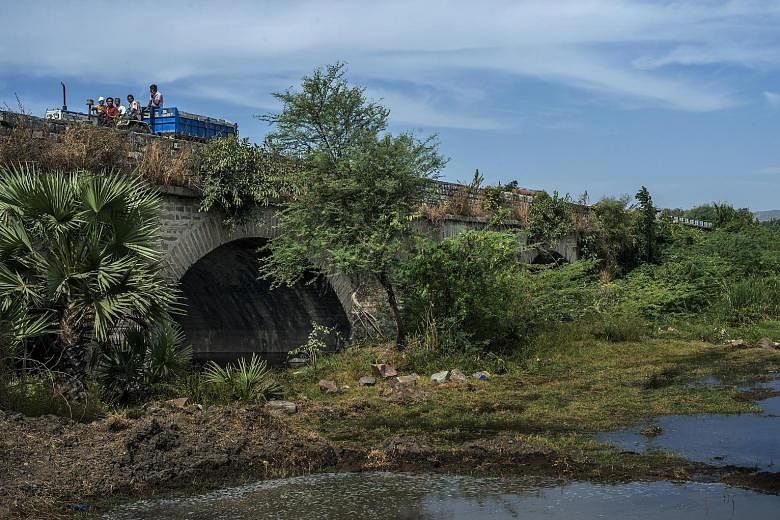HYDERABAD • When ISIS identified a promising young recruit willing to carry out an attack in one of India's major tech hubs, the terrorist group made sure to arrange everything down to the bullets he needed to kill victims.
For 17 months, terrorist operatives guided the recruit, a young engineer named Mohammed Ibrahim Yazdani, through every step of what they planned to be the Islamic State in Iraq and Syria's (ISIS) first strike on Indian soil.
They vetted each new member of the cell as Yazdani recruited helpers. They taught him how to pledge allegiance to the terrorist group and securely send the statement.
From Syria, investigators believe, the group's virtual plotters organised the delivery of weapons as well as the precursor chemicals used to make explosives, directing the Indian men to hidden pickup spots.
Until just moments before the arrest of the Indian cell, here in June last year, the ISIS' cyber planners kept in near-constant touch with the men, according to interrogation records of three of the eight suspects obtained by The New York Times.
As officials around the world face a confusing barrage of attacks dedicated to ISIS, cases like Yazdani's offer troubling examples of what counterterrorism experts are calling enabled or remote-controlled attacks: violence conceived and guided by operatives in areas controlled by ISIS whose only connection to the would-be attacker is the Internet.
In the most basic enabled attacks, ISIS handlers acted as confidants and coaches, coaxing recruits to embrace violence. In the Hyderabad plot, among the most involved found so far, the terrorist group reached deep into a country with strict gun laws in order to arrange for pistols and ammunition to be left in a bag swinging from the branches of a tree.
For the most part, the operatives who are conceiving and guiding such attacks are doing so from behind a wall of anonymity. When the Hyderabad plotters were arrested last summer, they could not so much as confirm the nationalities of their ISIS interlocutors, let alone describe what they looked like. Because the recruits are instructed to use encrypted messaging applications, the guiding role played by the terrorist group often remains obscured.
As a result, remotely guided plots in Europe, Asia and the United States in recent years, including the attack on a community centre in Garland, Texas, were initially labelled the work of "lone wolves", with no operational ties to ISIS, and only later was direct communication with the group discovered.
Close examination of both successful and unsuccessful plots carried out in the ISIS' name over the past three years indicates that such enabled attacks are making up a growing share of the group's operations.
"If you look at the communications between the attackers and the virtual plotters, you will see that there is a direct line of communication to the point where they are egging them on minutes, even seconds, before the individual carries out an attack," said Mr Nathaniel Barr, a terrorism analyst at Valens Global. He, along with Mr Daveed Gartenstein-Ross of the Foundation for Defence of Democracies in Washington, wrote one of the first articles discussing the virtual plotters.
Yazdani's case presents one of the most detailed accounts of how ISIS is exporting terrorism virtually. This style of attack has allowed the terrorist group's reach to stretch into countries as disparate as France and Malaysia, Germany and Indonesia, Bangladesh and Australia.
"I fear this is the future of ISIS," said Ms Bridget Moreng, an analyst whose research on the virtual plotters was recently published in Foreign Affairs.
One of ISIS' most influential recruiters and virtual plotters was known by the nom de guerre Abu Issa al-Amriki, whose followers - Yazdani and his accomplice Habeeb Mohammed, 31 - were arrested in Hyderabad after a human error.
The plot began to unravel last June, after the men were instructed to collect a 10kg bag of ammonium nitrate left beside a canal next to mile marker No. 9 on the Vijayawada Highway.
They returned to Mohammed's home to begin preparing a bomb, but could not figure out how to replicate the steps in the instructional YouTube video sent to them by the handler.
"We could not succeed in making powder, as it became jelly-like paste," Yazdani lamented, according to the transcript of his interrogation. They tried using a tea strainer. They tried heating it longer. They began talking on their cellphones about their efforts to "cook the rice".
By then, the police were wiretapping their calls and suspected the food talk was a crude attempt at misdirection. Early on June 29, officers found the half-cooked explosive in Mohammed's refrigerator.
NYTIMES

